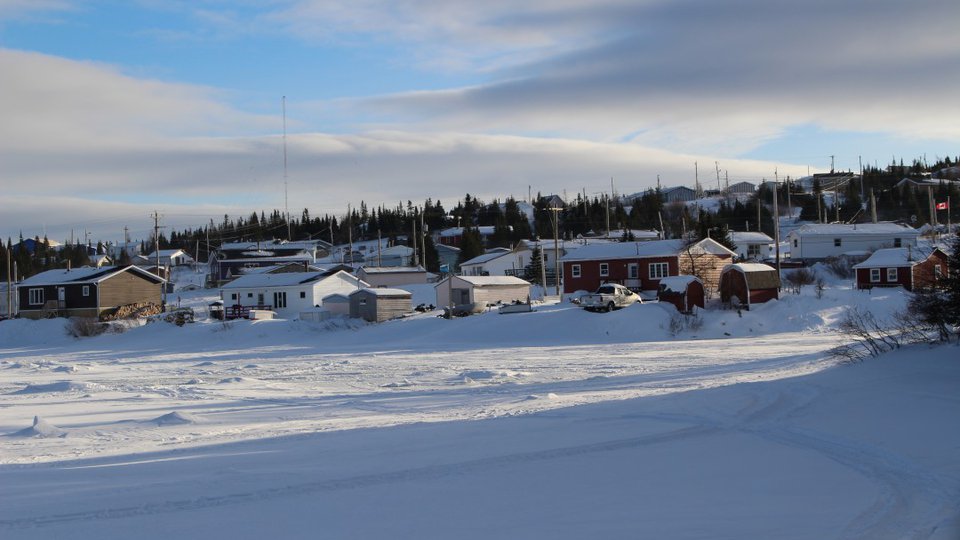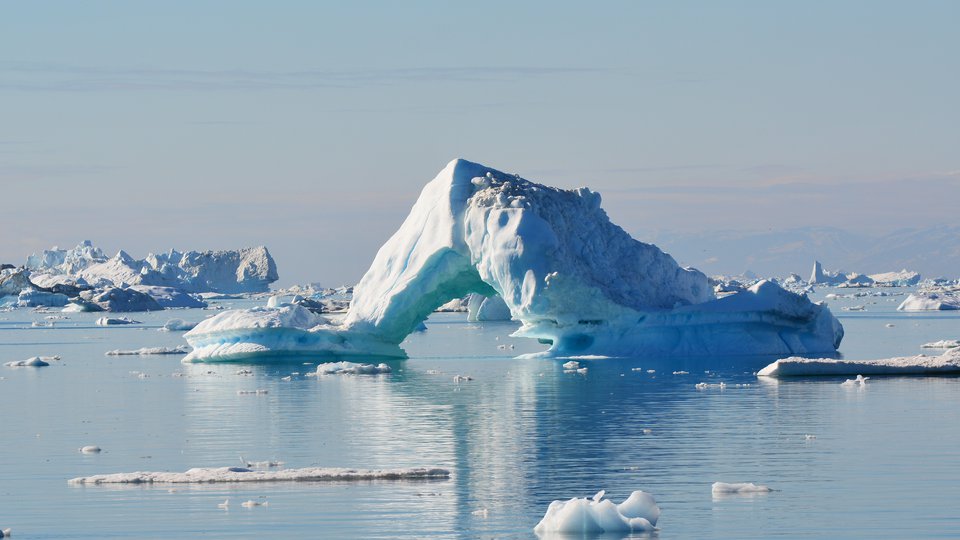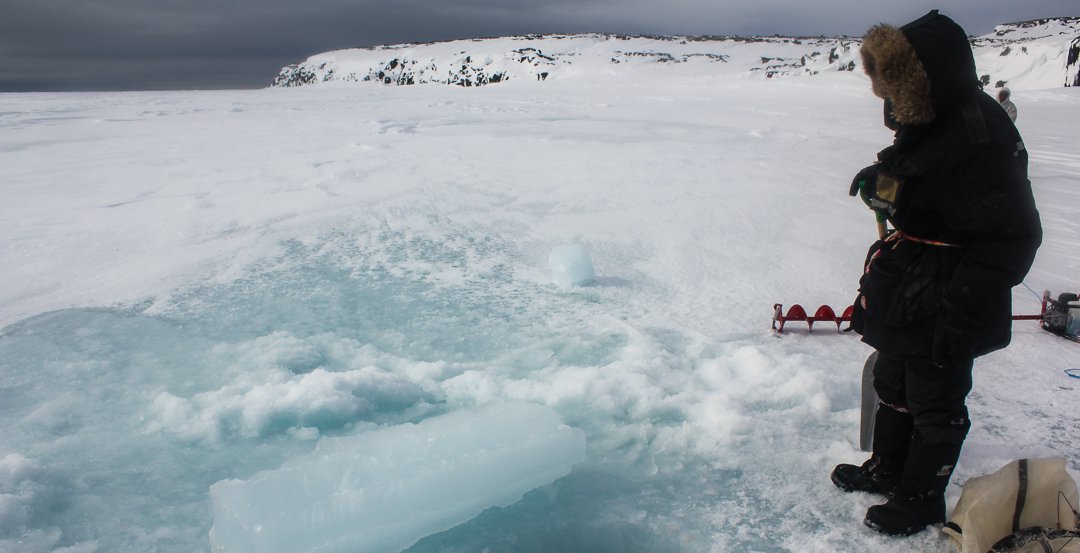
In Ulukhaktok, a small community located on the west coast of Victoria Island, Northwest Territories, there have been a number of unusual observations in recent years that have yet to be fully explained but could be linked to environmental changes in the area..
Coastal marine ecosystems in the Canadian Arctic are rapidly facing the effects of climate change, including restructuring of conventional food webs. Arctic species less adapted to warmer water temperatures are shifting further poleward and their sub-Arctic (boreal) congenator species are expanding further into the Arctic.
This includes reports of reducing body size of Arctic char and Greenland cod (DFO report 2016), unusual behaviour and diet of Beluga whale (Choy et al. 2020, Loseto et al. 2018), reducing seal blubber thickness (Harwood et al. 2020), and increasing numbers of sub-Arctic salmonids (Bilous and Dunmall 2020). In addition, our research group recently collaborated with Inuvialuit elders to report on a bloom of gelatinous zooplankton that was a first ever sighting for the people of Ulukhaktok (Pettitt-Wade et al. 2020).
These numerous unusual occurrences highlight the complexity of challenges faced by both the indigenous fauna and Inuvialuit. They are of particular concern for communities in the Inuvialuit Settlement Region (ISR) as they strive to maintain subsistence harvests long into the future.
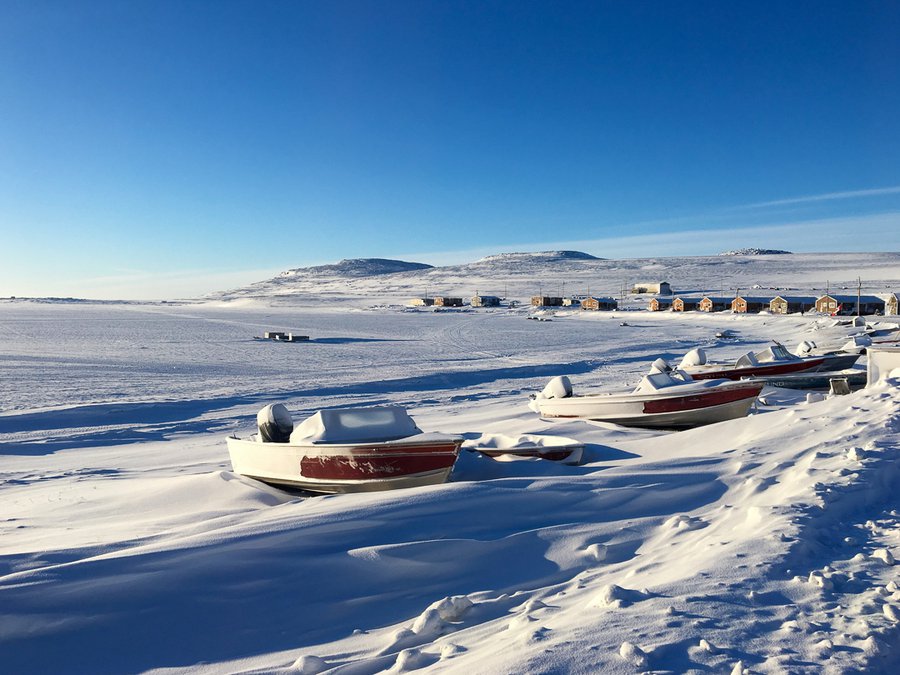
Snow and ice covered Ulukhaktok, February 2018. (Photo: Harri Pettitt-Wade)
In early 2018, I was invited to attend fisheries management meetings for the ISR, representing our research group focused on tracking fish and marine mammal movement (Hussey Lab-U Windsor and Loseto Lab-DFO). It had been established that more information was needed to understand fish movement in the region, and Inuvialuit were interested in the potential application of tracking fish movement using acoustic telemetry. A method that had proven very successful in other regions.
In early 2018, I was invited to attend fisheries management meetings for the ISR, representing our research group focussed on tracking fish and marine mammal movement (Hussey Lab-U Windsor and Loseto Lab-DFO). It had been established that more information was needed to understand fish movement in the region, and Inuvialuit were interested in the potential application of tracking fish movement using acoustic telemetry. A method that had proven very successful in other regions.
The previous year I had spent five weeks in an isolated field camp near Pond Inlet (Tremblay Sound, Baffin Bay) tagging narwhal, Greenland shark, Arctic sculpin and Arctic char to track their movements. This was followed by four weeks in Baffin Bay, sampling and tagging deep sea fishes, such as Greenland halibut, grenadiers, Arctic scate and juvenile Greenland shark.
Drawing from these successes in the East, our research team proposed a multi-layered approach to address community-based research questions and identify the primary drivers of variation in fish movement behaviour near Ulukhaktok.
Working closely with the community, fisheries management and our social scientist research partners (Tristan Pearce’s team, UNBC), we adapted our research strategy and direction, so findings were relative to what was already known of the system, and applicable to community interests and concerns.

A quick coffee and snack break in-between services moorings. From left to right: Harri Pettitt-Wade, Dani Orrell, Isaac Inuktalik, Ross Klengenberg. Photo: Colin Gallagher
Arctic char, Greenland cod and Arctic cod were identified as the focal species for the project. Arctic cod is central to Arctic food webs and a key component of understanding transitions in coastal marine food webs. Arctic char and Greenland cod are both common on the marine coast during summer, important for subsistence harvest and data deficient in this region.
These species have contrasting ecologies and life histories. Whereby Arctic char migrate and are only found on the marine coast during summer and return to freshwater to spawn, Greenland cod are present year-round. This comparison provides an opportunity to understand their varied response to climate change and the potential costs and benefits of different behavioral strategies relative to their broadly different ecologies.
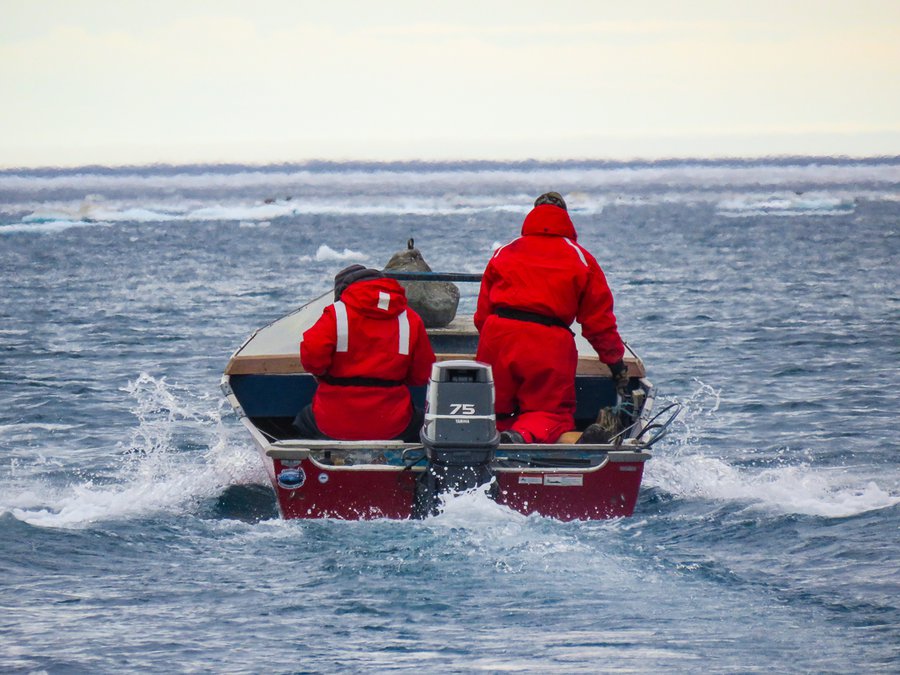
Ross Klengenberg and Danielle Orrell drive carefully into position to deploy one of the moorings with the rock anchor sitting on the front of the boat (Photo: Colin Gallagher)
How do we do this research?
Tracking fish movements using this technology requires the deployment of an array of listening device or receivers on the seabed. Fish are then captured, surgically implanted with tags and released.
The tags are programmed to emit a brief signal every few minutes and are detected as they move past the receivers, lasting up to 10-15 years depending on tag programming.
We attached a selection of loggers on the moorings to record oceanographic variables as potential drivers of fish movement. Each year we return and recover the equipment to download the valuable data. Samples are also collected from the tagged fish, other fish species and invertebrates to investigate food web drivers.
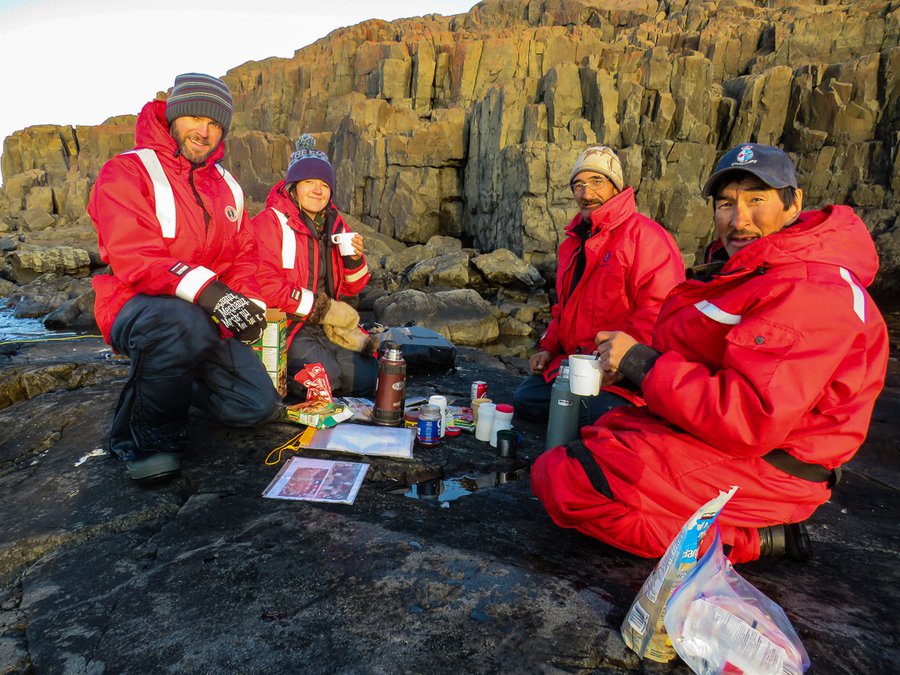
A quick coffee and snack break in-between services moorings. From left to right: Harri Pettitt-Wade, Dani Orrell, Isaac Inuktalik, Ross Klengenberg. Photo: Colin Gallagher
Fieldwork highs and lows
Our 2018 and 2019 field seasons went very well, with over 11 million raw detections of Greenland cod in a fine-scale 5m2 grid and over 10K detections of Arctic char on their marine migration.
Oceanographic data was recorded at least every hour throughout the array. Analysis of blood samples from each tagged fish provided insights on diet as a driver of movements. Potential links with body condition highlighted the physical demands of long-distance coastal migration compared to short-distance migrations for Arctic char, or annual residency on the marine coast for Greenland cod.
Transects with a fish finder supported with underwater video footage provided enough data to map sections of the seabed to understand the importance of substrate and bathymetry for Greenland cod habitat use.
However, we are yet to succeed in finding the elusive Arctic cod large enough for tagging in the area. This is despite fishing through six feet of late winter sea-ice, in addition to our efforts during open-water seasons.

The 2019 spring sun sets over camp pitched on the sea-ice where we deployed moorings and tagged fish during the previous open-water summer season. (Photo: Harri Pettitt-Wade)
Transitioning towards remote fieldwork during a global pandemic
One of the many lessons learnt from 2020 is that Arctic field research run by non-Arctic residents is particularly vulnerable when travel is restricted. Field work can be a lot more feasible when it can be conducted by community members.
Our field program is one of the many that has been affected by this years’ tragic turn of events. However, community partnership and fostering research leadership in community hires has remained a core theme throughout the program.
As I write this from my home and office during lock-down in Windsor, Ontario, our experienced field captains Ross Klengenberg and Isaac Inuktalik are recovering the moorings that have been sitting on the seabed along the Diamond Jenness Peninsula for the past year. Without the community’s and their dedication to this program, this valuable equipment and the data stored within could be lost.
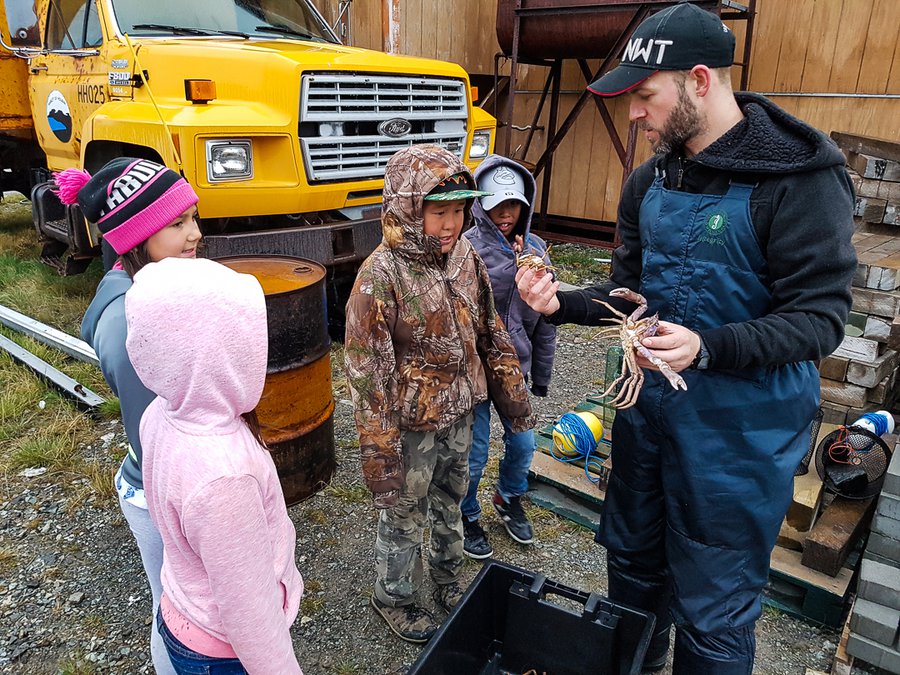
This was the first time these children had seen a crab and most locals had no idea they were present at high numbers within a few hundred meters of the community. (Photo: Kevin Scharffenberg)
Harri Pettitt-Wade is a Postdoctoral Fellow in the Hussey Lab at the University of Windsor, partnered with Fisheries and Oceans Canada and with support from the Marine Environmental Observation, Prediction and Response Network (MEOPAR). This research project is supported by the Fisheries Joint Management Committee (FJMC), Beaufort Regional Strategic Environmental Assessment (BRSEA), ArcticNet Strategic Investment project ‘Using Co-Produced Knowledge to Understand and Manage Subsistence Marine Harvests in a Changing Climate’, the Ulukhaktok Char Working Group and the Olokhaktomiut Hunters and Trappers Committee (OHTC).
References
Loseto, L., Brewster, J.D., Ostertag, S., Snow, K., MacPhee, S., McNicholl, D.G., Choy, E.S., Giraldo, C., Hornby, C., (2018). Diet and feeding observations from an unusual beluga harvest in 2014 in Ulukhaktok, Northwest Territories, Canada. Arctic Sci.
Fawcett, D., Pearce, T., Notaina, R., Ford, J., & Collings, P. (2018). Inuit adaptability to changing environmental conditions over an 11-year period in Ulukhaktok, Northwest Territories. Polar Record, 54(2)
DFO. (2016). Assessment of Arctic Char (Salvelinus alpinus) in the Ulukhaktok area of the Northwest Territories. DFO Can. Sci. Advis. Sec. Sci. Advis. Rep. 2016/038.
Turetsky, M. R., Baltzer, J. L., Johnstone, J. F., Mack, M. C., McCann, K., & Schuur, E. A. (2017). Losing legacies, ecological release, and transient responses: key challenges for the future of northern ecosystem science. Ecosystems, 20(1), 23-30.
Bilous, M., & Dunmall, K. (2020). Atlantic salmon in the Canadian Arctic: potential dispersal, establishment, and interaction with Arctic char. Reviews in Fish Biology and Fisheries, 1-21.
Choy, E. S., Giraldo, C., Rosenberg, B., Roth, J. D., Ehrman, A. D., Majewski, A., ... & Loseto, L. L. (2020). Variation in the diet of beluga whales in response to changes in prey availability: insights on changes in the Beaufort Sea ecosystem. Marine Ecology Progress Series, 647, 195-210.
Barkley, A. N., Broell, F., Pettitt‐Wade, H., Watanabe, Y. Y., Marcoux, M., & Hussey, N. E. (2020). A framework to estimate the likelihood of species interactions and behavioural responses using animal‐borne acoustic telemetry transceivers and accelerometers. Journal of Animal Ecology, 89(1), 146-160.
Pettitt-Wade, H., Pearce, T., Kuptana, D., Gallagher, C. P., Scharffenberg, K., Lea, E. V., ... & Loseto, L. L. (2020). Inuit observations of a Tunicata bloom unusual for the Amundsen Gulf, western Canadian Arctic. Arctic Science, 6(3), 340-351. Also on medium: https://medium.com/arctic-science/inuit-observations-of-a-tunicata-bloom-unusual-for-the-amundsen-gulf-western-canadian-arctic-cccad6bf9cbb

